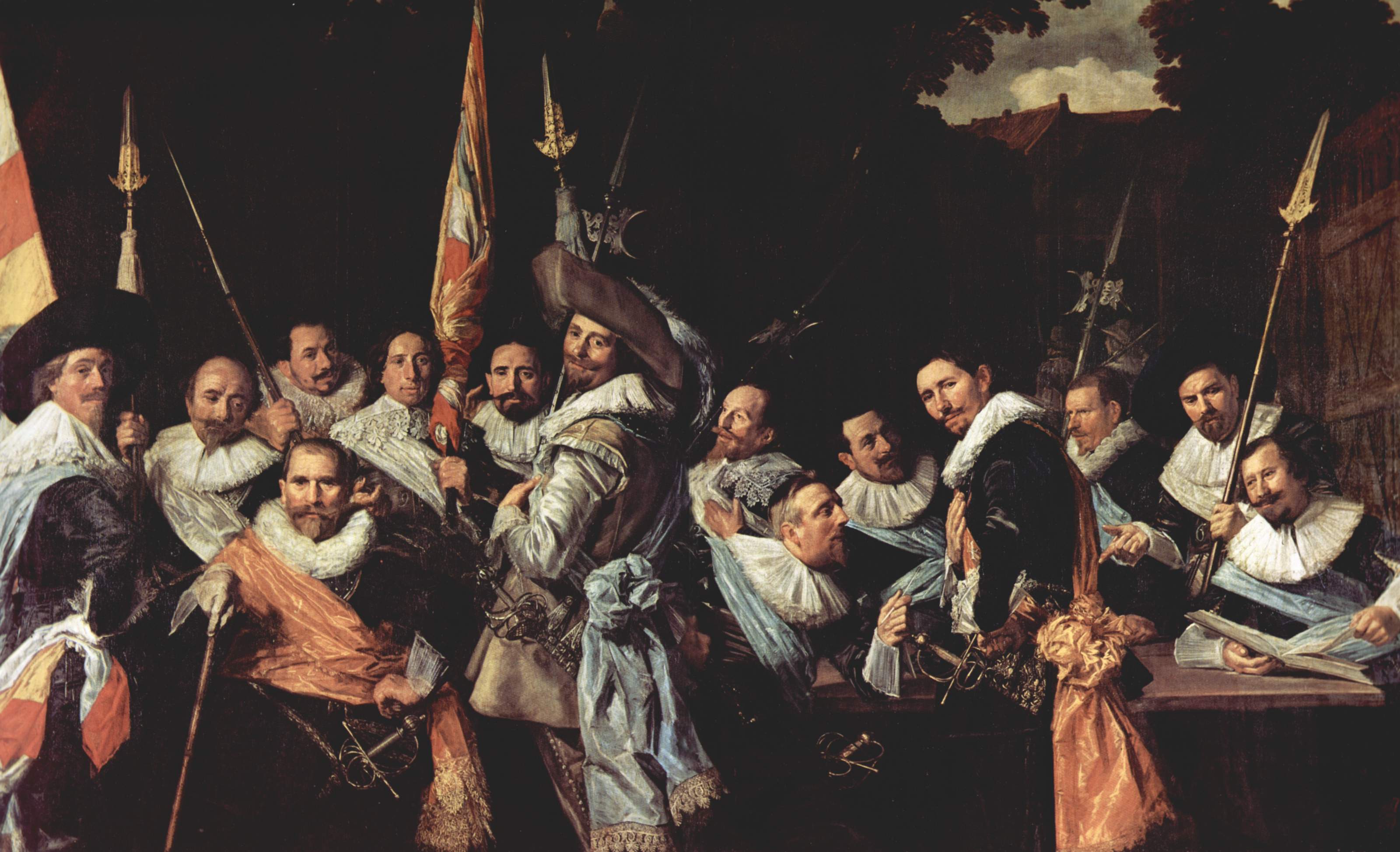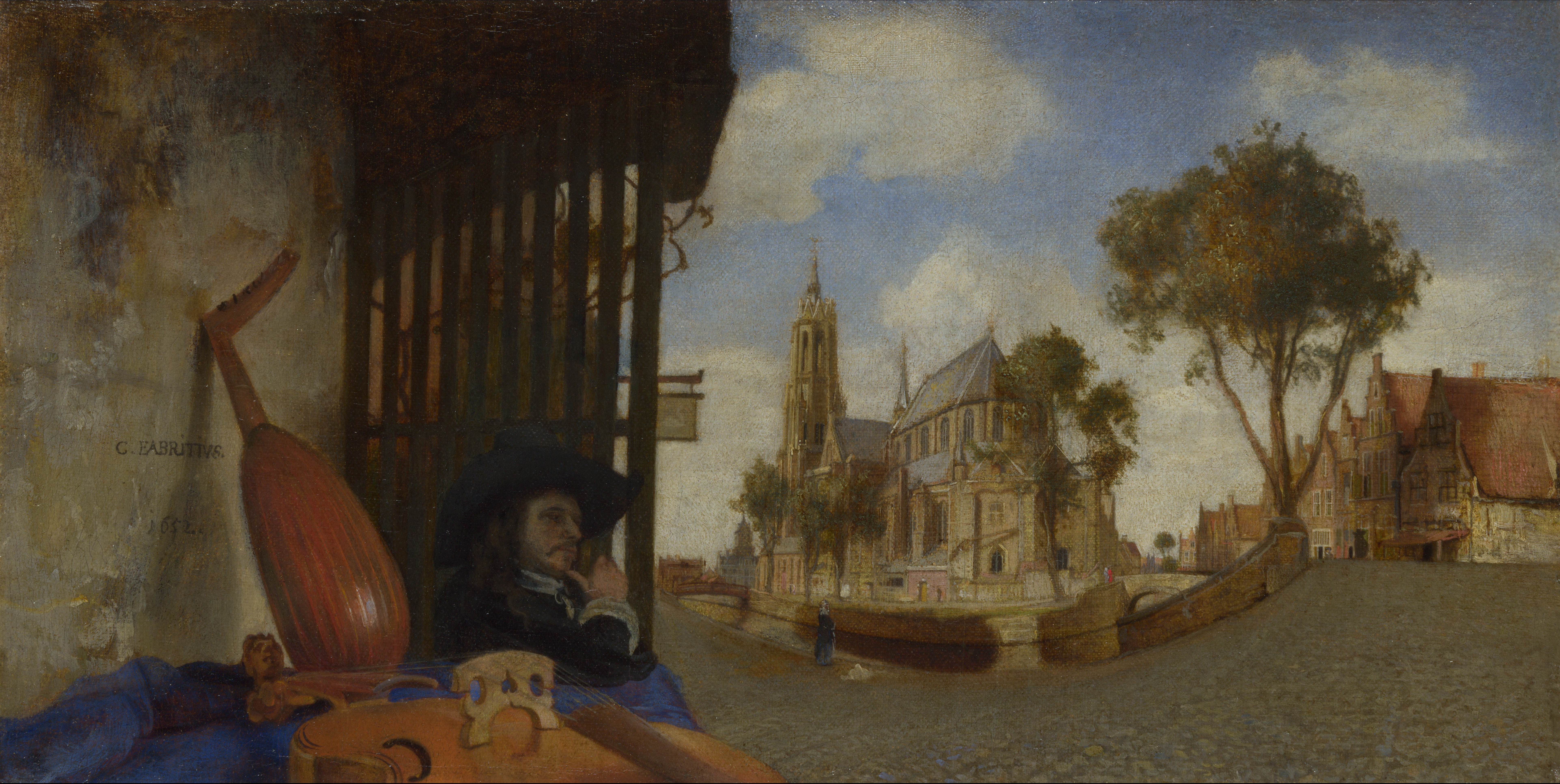|
Christ Crowned With Thorns (Heemskerck)
''Christ Crowned with Thorns'' is a c. 1550 painting by the Dutch painter Maarten van Heemskerck in the collection of the Frans Hals Museum, in Haarlem.De doornenkroning, 1545-1550 in the RKD The subject depicts Christ before the crucifixion being mocked by soldiers, who are fixing the crown of thorns to his head. It was commissioned by the Church of Delft where it hung until 1625 when it was removed and placed in the town hall
[...More Info...] [...Related Items...] OR: [Wikipedia] [Google] [Baidu] |
Maarten Van Heemskerck
Maarten van Heemskerck or ''Marten Jacobsz Heemskerk van Veen'' (1 June 1498 - 1 October 1574) was a Dutch portrait and religious painter, who spent most of his career in Haarlem. He was a pupil of Jan van Scorel, and adopted his teacher's Italian-influenced style. He spent the years 1532–6 in Italy. He produced many designs for engravers, and is especially known for his depictions of the Wonders of the World. Biography Early life Heemskerck was born in the village of Heemskerk, North Holland, halfway between Alkmaar and Haarlem. He was the son of a farmer called Jacob Willemsz. van Veen. According to his biography by Karel van Mander, he began his artistic training with the painter Cornelius Willemsz in Haarlem, but was recalled to Heemskerk by his father to work on the family farm. However, having contrived an argument with his father he left again, this time for Delft, where he studied under Jan Lucasz, before moving on to Haarlem, where he became a pupil of Jan van Scorel ... [...More Info...] [...Related Items...] OR: [Wikipedia] [Google] [Baidu] |
Frans Hals Museum
The Frans Hals Museum is a museum located in Haarlem, the Netherlands. The museum was established in 1862. In 1950, the museum was split in two locations when the collection of modern art was moved to the '' Museum De Hallen'' (since 2018 called ''Hal)''. The main collection, including its famous 17th-century Frans Hals paintings, for which the museum is named, is located in the former ''Oude Mannenhuis'' on the Groot Heiligland. The museum was founded in 1862 in the newly renovated former Dominican church cloisters located in the back of the Haarlem city hall known as the ''Prinsenhof'', and when it needed more space, it moved to the recently vacated location of the town orphanage in 1913. The collection is based on the large number of paintings owned by the City of Haarlem, which includes over 100 artworks seized from Catholic churches in the 1580s after the Protestant Reformation, and Haarlem art rescued from demolished local buildings from the 15th century onwards. In 2018 t ... [...More Info...] [...Related Items...] OR: [Wikipedia] [Google] [Baidu] |
Haarlem
Haarlem (; predecessor of ''Harlem'' in English) is a city and municipality in the Netherlands. It is the capital of the province of North Holland. Haarlem is situated at the northern edge of the Randstad, one of the most populated metropolitan areas in Europe; it is also part of the Amsterdam metropolitan area, being located about 15 km to the west of the core city of Amsterdam. Haarlem had a population of in . Haarlem was granted city status or '' stadsrechten'' in 1245, although the first city walls were not built until 1270. The modern city encompasses the former municipality of Schoten as well as parts that previously belonged to Bloemendaal and Heemstede. Apart from the city, the municipality of Haarlem also includes the western part of the village of Spaarndam. Newer sections of Spaarndam lie within the neighbouring municipality of Haarlemmermeer. Geography Haarlem is located on the river Spaarne, giving it its nickname 'Spaarnestad' (Spaarne city). It is situated a ... [...More Info...] [...Related Items...] OR: [Wikipedia] [Google] [Baidu] |
Crown Of Thorns
According to the New Testament, a woven crown of thorns ( or grc, ἀκάνθινος στέφανος, akanthinos stephanos, label=none) was placed on the head of Jesus during the events leading up to his crucifixion. It was one of the instruments of the Passion, employed by Jesus' captors both to cause him pain and to mock his claim of authority. It is mentioned in the gospels of Matthew (Matthew 27:29), Mark (Mark 15:17) and John (John 19:2, 19:5), and is often alluded to by the early Church Fathers, such as Clement of Alexandria, Origen and others, along with being referenced in the apocryphal Gospel of Peter. Since at least around the year 400 AD, a relic believed by many to be the crown of thorns has been venerated. In 1238, the Latin Emperor Baldwin II of Constantinople yielded the relic to French King Louis IX. It was kept in the Notre-Dame Cathedral in Paris until 15 April 2019, when it was rescued from a fire and moved to the Louvre Museum. As a relic Jerusalem T ... [...More Info...] [...Related Items...] OR: [Wikipedia] [Google] [Baidu] |
Nieuwe Kerk (Delft)
The Nieuwe Kerk (; en, New Church) is a Protestant church in the city of Delft in the Netherlands. The building is located on Delft Market Square (Markt), opposite to the City Hall (Dutch: ''Stadhuis''). In 1584, William the Silent was entombed here in a mausoleum designed by Hendrick and Pieter de Keyser. Since then members of the House of Orange-Nassau have been entombed in the royal crypt. The latest are Queen Juliana and her husband Prince Bernhard in 2004. The private royal family crypt is not open to the public. The church tower, with the most recent recreation of the spire which was designed by Pierre Cuypers and completed in 1872, is the second highest in the Netherlands, after the Domtoren in Utrecht. History The New Church, formerly the church of St. Ursula (14th century), is the burial place of the princes of Orange. The church is remarkable for its fine tower and chime of bells, and contains the splendid allegorical monument of William the Silent, crafted by Hen ... [...More Info...] [...Related Items...] OR: [Wikipedia] [Google] [Baidu] |
City Hall (Delft)
The City Hall in Delft is a Renaissance style building on the Markt across from the Nieuwe Kerk. It is the seat of the city's government as well as a popular venue for civic wedding ceremonies. Most administrative functions have been transferred to an office inside the Delft railway station building. Originally designed by the Dutch architect Hendrick de Keyser, it was heavily changed over the centuries and was restored in the 20th century to its Renaissance appearance. History In the town hall from 1618 are some group portraits, and portraits of the counts of Orange and Nassau, including several by Michiel van Mierevelt (1567–1641), one of the earliest Dutch portrait painters, and with his son Pieter (1595–1623), a native of Delft. The oldest part of the complex is the belfry covered in " Gobertanger" limestone from Wallonia, a building material used often in important renaissance buildings in the Netherlands up to 1600. The tower, called "De Steen" or "The Stone", was origi ... [...More Info...] [...Related Items...] OR: [Wikipedia] [Google] [Baidu] |
Man Of Sorrows (Maarten Van Heemskerck)
The ''Man of Sorrows'' is a 1532 painting by the Dutch Golden Age painter Maarten van Heemskerck in the collection of the Museum of Fine Arts, Ghent The Museum of Fine Arts ( nl, Museum voor Schone Kunsten, MSK) an art museum in Ghent, Belgium, is situated at the East side of the Citadelpark (near the Stedelijk Museum voor Actuele Kunst). The museum's collection consists of some 9000 artworks .... It shows the Man of Sorrows. The subject depicts Christ after the crucifixion attended by angels, with wounds prominently displayed, wearing the crown of thorns and a loincloth. The loincloth is claimed to be wrapped around an erection, visible to some art historians but not others. Van Heemskerck is not the only Renaissance artist allegedly to depict Christ with an erection (''ostentatio genitalium''), which some scholars interpret as a symbol of his resurrection and continuing power.Steinberg, Leo. ''The Sexuality of Christ in Renaissance Art and in Modern Oblivion''. Chicago: ... [...More Info...] [...Related Items...] OR: [Wikipedia] [Google] [Baidu] |
Crucifixion (Heemskerck)
''Crucifixion'' is a 1543 polyptych by the Dutch Mannerist painter Maarten van Heemskerck in Linköping Cathedral consisting of a taller triptych above a shorter triptych, resulting in six panels in the front and four in the back.Het Laurentiusaltaar (geopend), 1539-1543 in the RKD The central panel shows the crucifixion of Christ surrounded by figures, supported on the left with a panel showing '' Ecce Homo'', and on the right with the '' Resurrection''. The lower triptych ... [...More Info...] [...Related Items...] OR: [Wikipedia] [Google] [Baidu] |
1550s Paintings
Year 155 ( CLV) was a common year starting on Tuesday (link will display the full calendar) of the Julian calendar. At the time, it was known as the Year of the Consulship of Severus and Rufinus (or, less frequently, year 908 ''Ab urbe condita''). The denomination 155 for this year has been used since the early medieval period, when the Anno Domini calendar era became the prevalent method in Europe for naming years. Births * Cao Cao, Chinese statesman and warlord (d. 220) * Dio Cassius, Roman historian (d. c. 235) * Tertullian, Roman Christian theologian (d. c. 240) * Sun Jian, Chinese general and warlord (d. 191) Deaths * Pius I, Roman bishop * Polycarp, bishop of Smyrna (b. AD 65 AD 65 ( LXV) was a common year starting on Tuesday (link will display the full calendar) of the Julian calendar. At the time, it was known as the Year of the Consulship of Nerva and Vestinus (or, less frequently, year 818 ''Ab urbe condita''). ...) References {{DEFAULTSORT:155 ... [...More Info...] [...Related Items...] OR: [Wikipedia] [Google] [Baidu] |
Paintings Depicting Christ Crowned With Thorns
Painting is the practice of applying paint, pigment, color or other medium to a solid surface (called the "matrix" or "support"). The medium is commonly applied to the base with a brush, but other implements, such as knives, sponges, and airbrushes, can be used. In art, the term ''painting ''describes both the act and the result of the action (the final work is called "a painting"). The support for paintings includes such surfaces as walls, paper, canvas, wood, glass, lacquer, pottery, leaf, copper and concrete, and the painting may incorporate multiple other materials, including sand, clay, paper, plaster, gold leaf, and even whole objects. Painting is an important form in the visual arts, bringing in elements such as drawing, composition, gesture (as in gestural painting), narration (as in narrative art), and abstraction (as in abstract art). Paintings can be naturalistic and representational (as in still life and landscape painting), photographic, abstract, narrative, s ... [...More Info...] [...Related Items...] OR: [Wikipedia] [Google] [Baidu] |
Paintings By Maarten Van Heemskerck
Painting is the practice of applying paint, pigment, color or other medium to a solid surface (called the "matrix" or "support"). The medium is commonly applied to the base with a brush, but other implements, such as knives, sponges, and airbrushes, can be used. In art, the term ''painting ''describes both the act and the result of the action (the final work is called "a painting"). The support for paintings includes such surfaces as walls, paper, canvas, wood, glass, lacquer, pottery, leaf, copper and concrete, and the painting may incorporate multiple other materials, including sand, clay, paper, plaster, gold leaf, and even whole objects. Painting is an important form in the visual arts, bringing in elements such as drawing, composition, gesture (as in gestural painting), narration (as in narrative art), and abstraction (as in abstract art). Paintings can be naturalistic and representational (as in still life and landscape painting), photographic, abstract ... [...More Info...] [...Related Items...] OR: [Wikipedia] [Google] [Baidu] |






